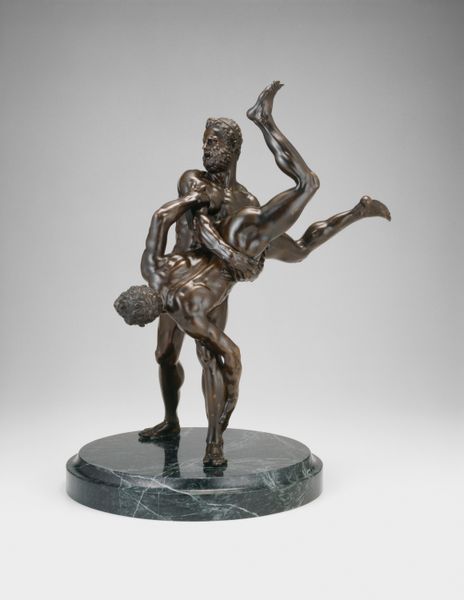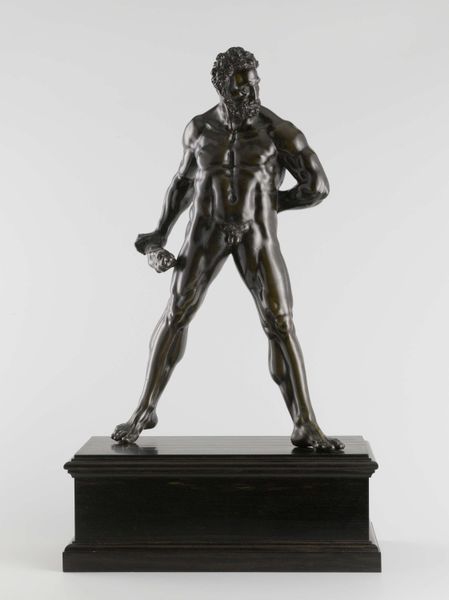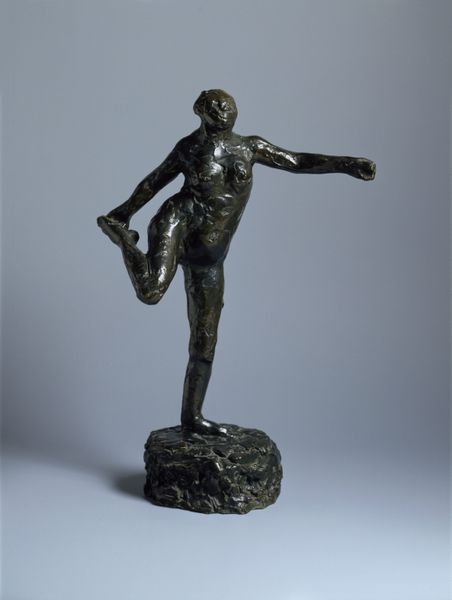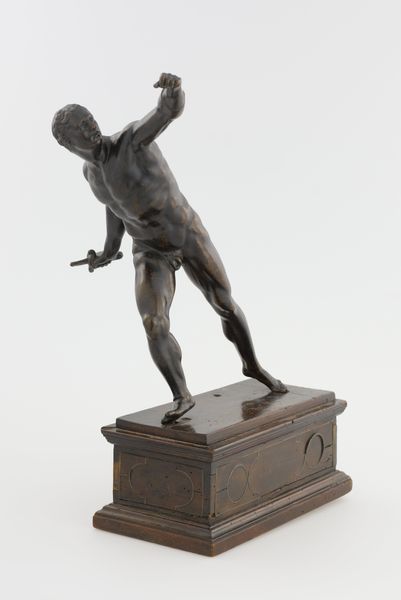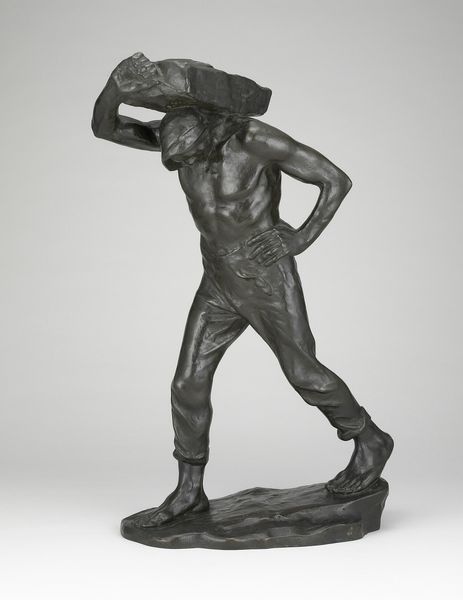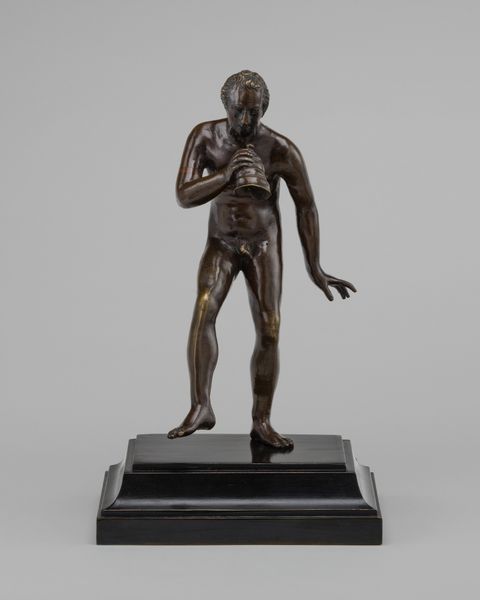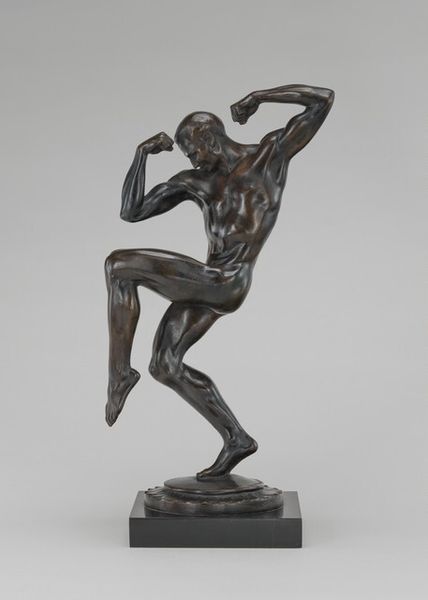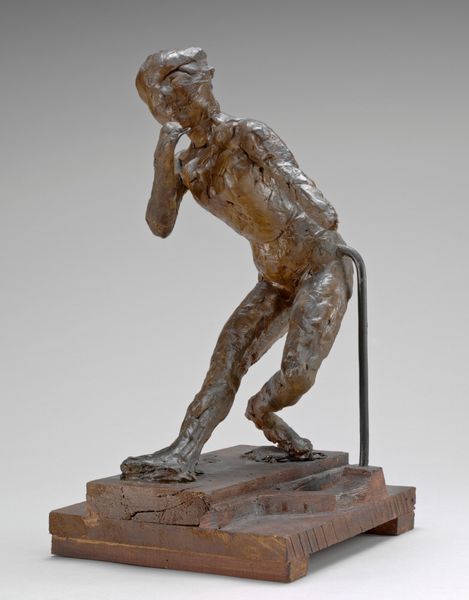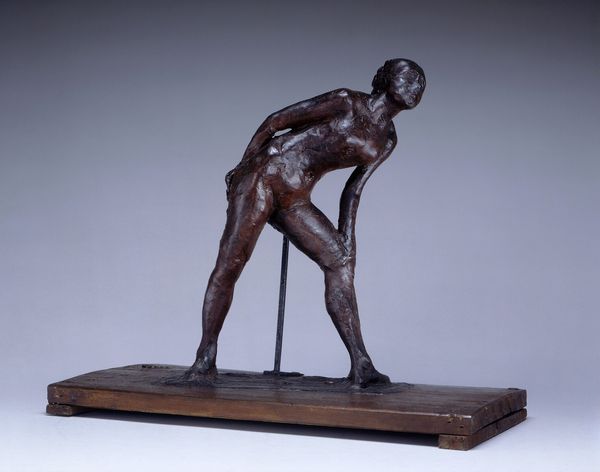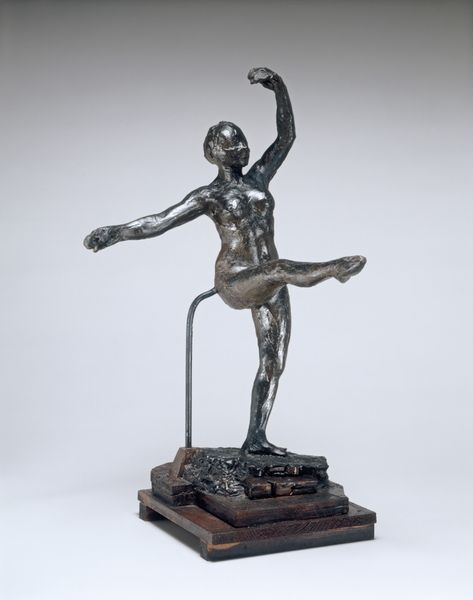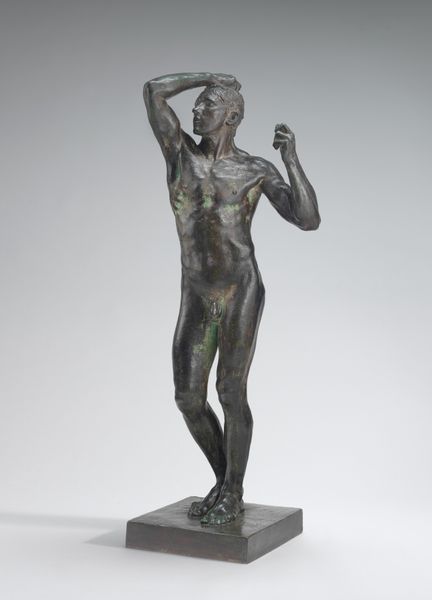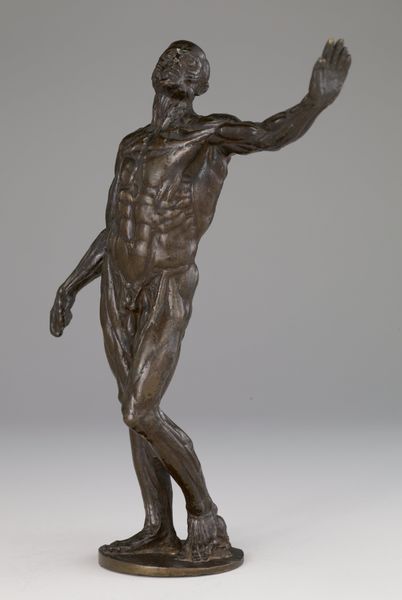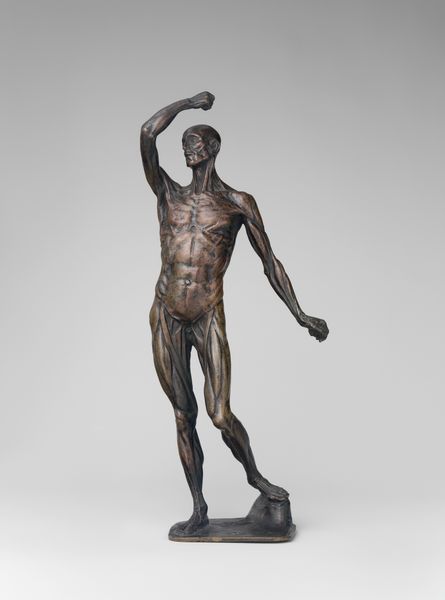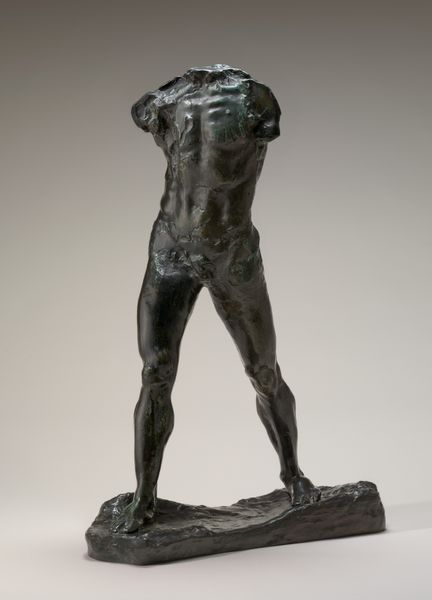
Dimensions: 40.7 x 29.8 x 18.8 cm
Copyright: Public Domain
Curator: This is Auguste Rodin's bronze sculpture "Study of Balzac," believed to have been created between 1893 and 1955, and it's currently held here at the Städel Museum. Editor: My first thought is powerful. There's a raw energy to it. The pose—so commanding, and yet...vulnerable? You can almost feel the weight of the bronze itself. Curator: Indeed. Balzac, the literary giant, presented as almost godlike, an archetype. Observe the placement of his hand, slightly concealed behind his back—a suggestion of concealed complexity or uncertainty. It's a fascinating visual cue. Editor: And that texture! It’s not smooth, idealized bronze. You see the marks of its making everywhere— the fingerprints of the artist. This emphasizes the sheer labor in creating it. I wonder what the process looked like to bring this into being. Was it cast as a single piece? Curator: Ah, yes, the rough texture, far from classical ideals, echoes the internal torment of a genius wrestling with his art. There’s a romantic tension there. Also notice how Rodin captures the human form in its pure state, without idealized draping. Editor: But that very "pure state," the nudity, was itself likely manufactured. What kind of social context and conventions permitted the open display of it then, or what meaning does it convey for us today when viewing the piece? The body in itself also become the work that bears those questions. Curator: You touch on a critical point. Rodin's portrayal, beyond physical appearance, represents the soul, the driving force behind Balzac's writing. And he evokes him outside conventional time and space. His enduring literary output resonates for us across the ages. Editor: Still, it all begins and ends with the physical processes. I am struck with the hands that produced this from formless mass, making something palpable that lives within collective human imagination. What kind of tools? What were they wearing? Curator: And as we explore the process, perhaps we might continue thinking about what that process evokes in turn; how raw materiality can transform human imagination and ideals. Editor: Material and soul then, always interlinked.
Comments
No comments
Be the first to comment and join the conversation on the ultimate creative platform.
